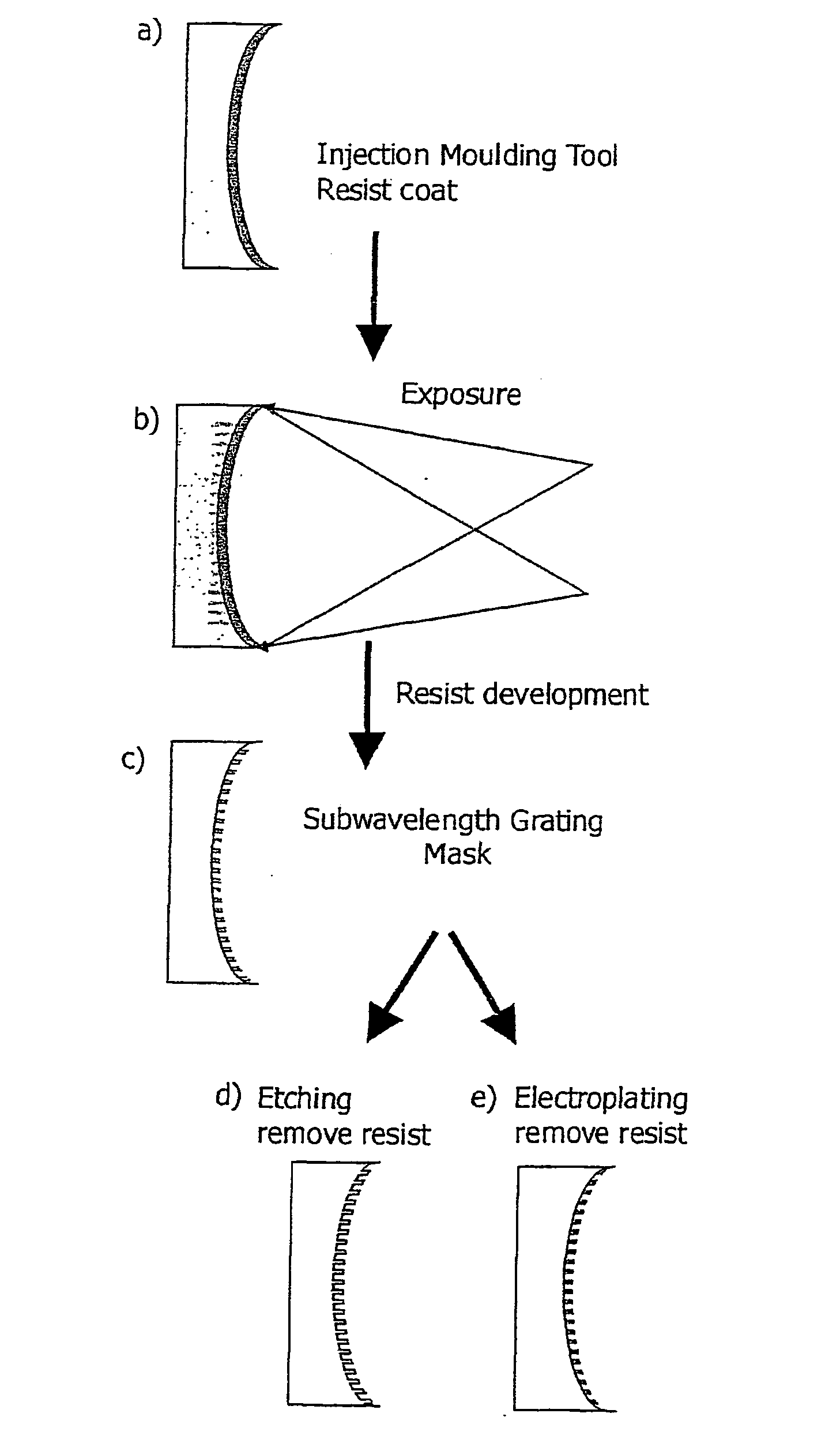Technique for microstructuring replication mold
a micro-structuring and mold technology, applied in the field of micro-structuring replication molds, can solve the problems of limited microstructures, complicated basic form fabrication process, and inability to produce very fine micro- or nano-structures
- Summary
- Abstract
- Description
- Claims
- Application Information
AI Technical Summary
Problems solved by technology
Method used
Image
Examples
Embodiment Construction
[0019] Embodiments of the invention will now be described by way of example, with reference to the drawings, in which:
[0020] FIG. 1 illustrates the processing steps of a method embodying the invention; and
[0021] FIG. 2 illustrates the holographic exposure of a substrate of a curved mould surface.
[0022] FIG. 1 illustrates the technique for the fabrication of a high resolution, subwavelength AR (Anti-reflection) grating microstructure. Such gratings have the following typical parameters:
[0023] Periodicity: 200-400 nm
[0024] Linewidths: 100-200 nm
[0025] Relief depth: 100-200 nm
[0026] The details of the processing steps (c.f. FIG. 1) are as follows:
[0027] 1. Mask Fabrication
[0028] (a) The mould insert is coated with a thin film of photoresist (such as Shipley 1800 series). The coating of uniform thickness films on non-planar surfaces is difficult and requires special coating technology. An alternative to commercial photoresists are developmental systems such as dry resists of the chalcog...
PUM
| Property | Measurement | Unit |
|---|---|---|
| depths | aaaaa | aaaaa |
| Relief depth | aaaaa | aaaaa |
| depth | aaaaa | aaaaa |
Abstract
Description
Claims
Application Information
 Login to View More
Login to View More - R&D
- Intellectual Property
- Life Sciences
- Materials
- Tech Scout
- Unparalleled Data Quality
- Higher Quality Content
- 60% Fewer Hallucinations
Browse by: Latest US Patents, China's latest patents, Technical Efficacy Thesaurus, Application Domain, Technology Topic, Popular Technical Reports.
© 2025 PatSnap. All rights reserved.Legal|Privacy policy|Modern Slavery Act Transparency Statement|Sitemap|About US| Contact US: help@patsnap.com



